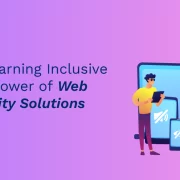
Masterclass: Decoding Consumer Psychology for Impactful UX Design

Blended Learning Systems: In this webinar we spoke of :-
In today’s digital age, Learning Management Systems (LMS) have transformed from being optional tools to essential components of organizational infrastructure. Whether it’s Fortune 500 companies or small startups, LMS platforms have become fundamental to employee development and organizational growth.
At the heart of modern LMS implementation lies the concept of blended learning, which combines traditional face-to-face instruction with digital learning experiences. This hybrid approach allows organizations to leverage the best of both worlds – the personal touch of classroom training and the scalability of digital solutions. This system through LMS enables employees to learn at their own pace while still maintaining interactive elements that boost engagement and retention.
The integration of LMS across various departmental functions has proven to be a game-changer. When properly synchronized with HR systems, it streamlines employee onboarding, tracks professional development, and maintains compliance training records. IT departments benefit from centralized user management and enhanced security protocols, while department heads can easily monitor team progress and identify skill gaps.
Implementation complexity varies significantly based on organizational needs. Open-source solutions like Moodle offer cost-effective options for smaller organizations, requiring minimal initial investment but potentially higher customization costs. Enterprise-level solutions from vendors like Cornerstone or Workday provide robust features but come with substantial licensing fees and longer implementation timelines.
The infrastructure requirements for LMS deployment typically include:
Organizations must also consider hidden costs such as:
The time frame for full LMS implementation can range from a few weeks for basic setups to several months for complex enterprise solutions. Success factors include clear objective setting, stakeholder buy-in, comprehensive testing, and structured user training programs. Regular monitoring and feedback collection ensure the system evolves with organizational needs while maintaining its effectiveness as a learning tool.
Hurix Digital provides custom solutions for digital learning and publishing across education, workforce learning, and publishing sectors.
HurixDigital – where innovation meets education, and digital solutions meet real-world challenges

Quickly uncover your web accessibility issues with our free ADA and WCAG compliance checker.